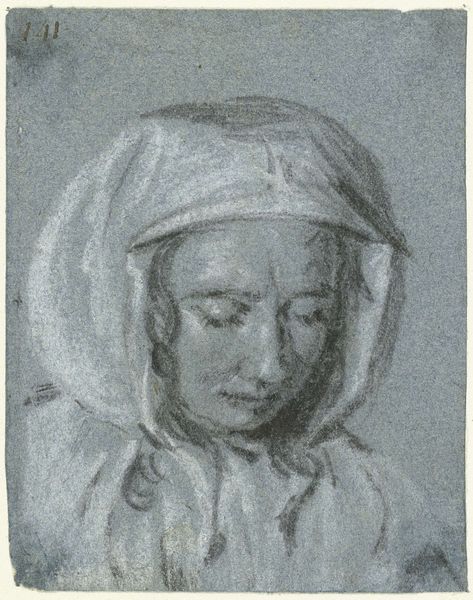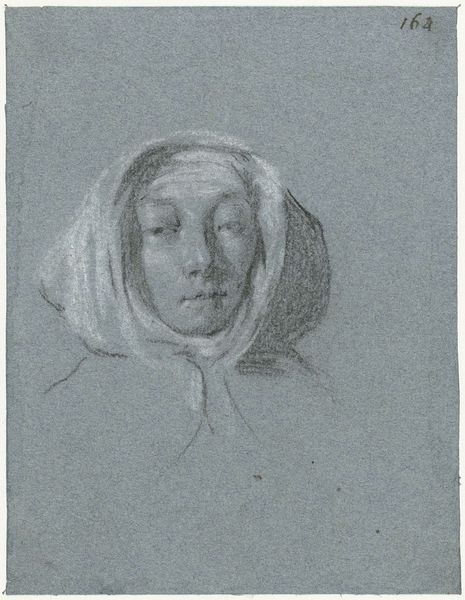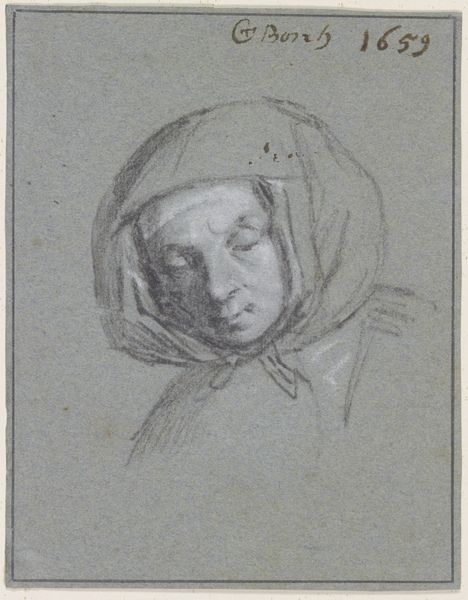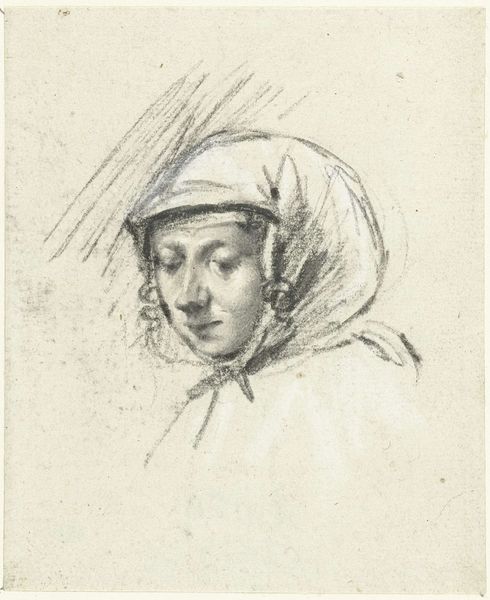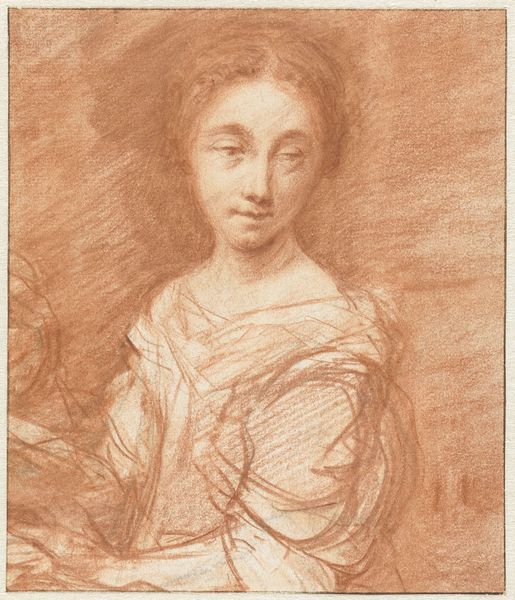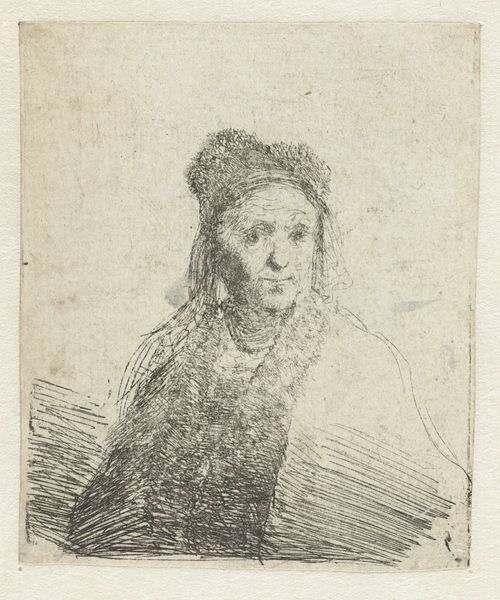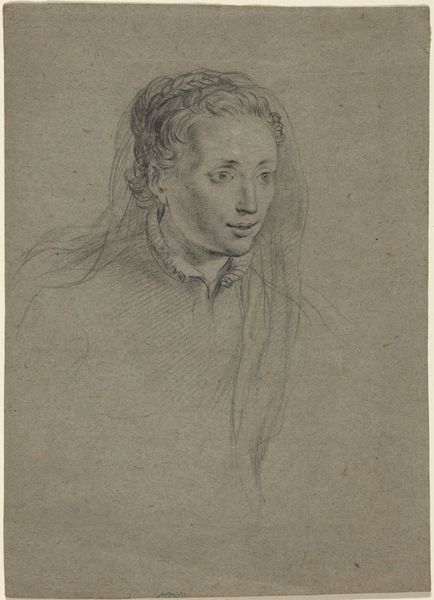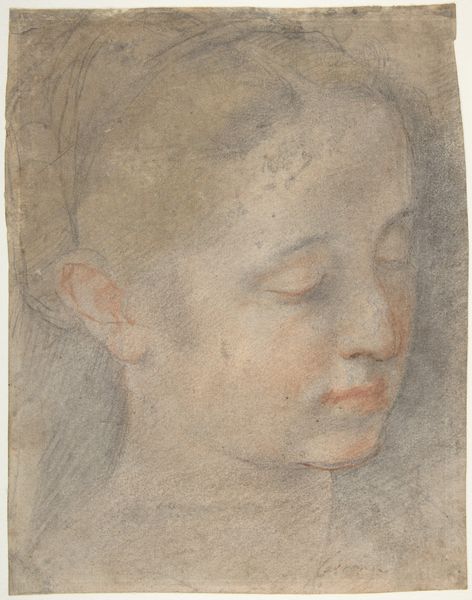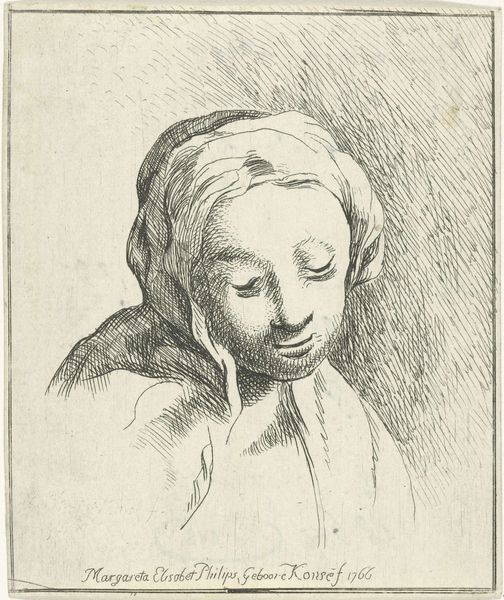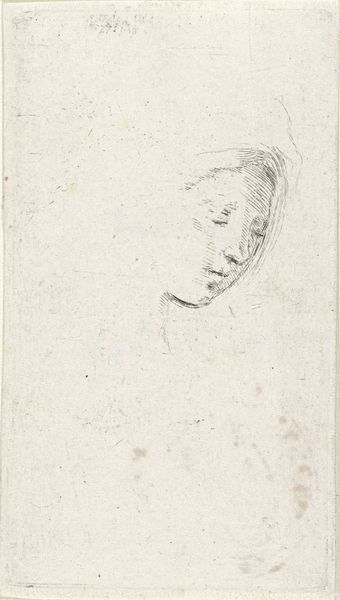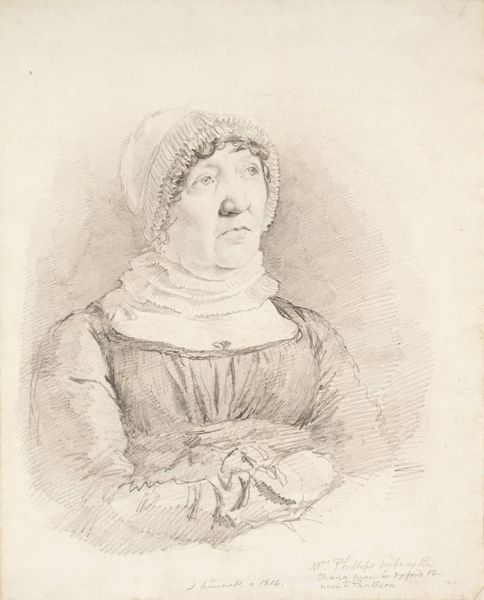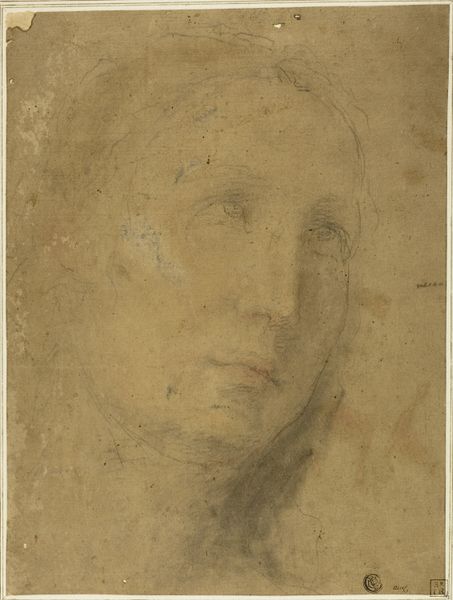
drawing, print, pencil
#
portrait
#
drawing
# print
#
pencil drawing
#
pencil
#
portrait drawing
#
watercolour illustration
#
northern-renaissance
Dimensions: 9 3/16 x 6 1/4 in. (23.2 x 15.8 cm)
Copyright: Public Domain
Editor: We're looking at "A Girl's Head," a drawing and print from sometime between 1600 and 1700, artist unknown. The girl's eyes are closed, and it's rendered mostly in muted grays. What strikes me is its quiet, almost melancholic mood. What do you make of it? Curator: It's interesting to consider this portrait in the context of early modern Europe. Given the prevalence of religious conflict and social stratification, depictions of children often served specific purposes. What might the choice of such muted tones and a closed-eye pose suggest about the role of portraiture at that time, particularly considering its potential function within family or courtly circles? Editor: So you think the somber feeling is deliberate, maybe commenting on something bigger than just this girl? Curator: Exactly. Remember, visual imagery was often employed as a tool to project status and reinforce cultural norms. Was this portrait intended for public display, or was it a more private reflection on childhood innocence within a changing world? Considering the anonymous attribution, does that change how we view the work and it’s reception? Editor: It being anonymous makes me wonder if it was someone not deemed important enough to be remembered. I wonder what that means about how women were valued at this time? Curator: That's a valid consideration. Works such as this highlight not just individual identity but reflect how societal frameworks affected representation and, consequently, the perception of identity and value during the early modern period. It may even suggest an intimate portrait meant for a closed circle of family, rather than broader consumption. What has shifted for you while looking at this? Editor: I initially saw sadness, but now I see complexity in its social and historical setting. The anonymity and medium speak to both an intimate depiction and the broader valuation of women and artistic talent. Curator: Precisely! Context is key, and hopefully, considering the period encourages us to challenge preconceived ideas.
Comments
No comments
Be the first to comment and join the conversation on the ultimate creative platform.
